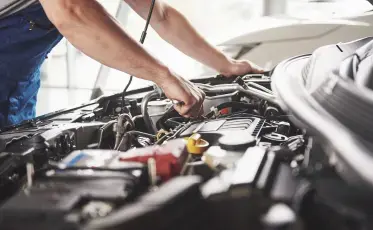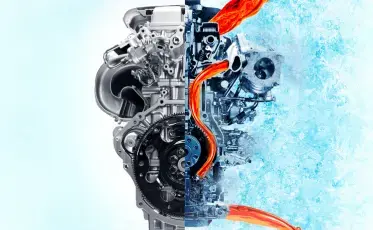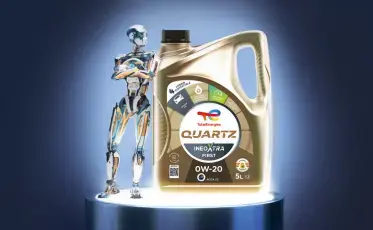
Antifreeze: everything you need to know
Our expert associate, Stevan Dimitrijević, PhD, responds to questions and misconceptions regarding antifreeze and coolant in the following text.
During engine operation in internal combustion engines (ICE), the mixture burns inside the cylinder, which releases a large amount of heat transferring it primarily to the cylinder walls, and then to the entire engine.
The moment the friction force becomes greater than the power of the engine itself, the engine automatically stops working due to the great damage it has suffered. To prevent this, the engine must be constantly cooled down during its operation.
Internal combustion engine cooling
A large number of cars have a cooling system that uses a coolant, that is antifreeze, because it effectively removes excess heat from the mechanisms and all individual parts of the engine structure, contributes to faster operating temperature when starting, and the engine operation is much quieter compared to the air-cooled engines.
The cooling system includes a water pump that causes the coolant to flow, then a fan, a radiator, and a thermostat. The coolant is constantly circulating from the engine to the radiator and back.
Although its main role is to lower the freezing point of the fluid and thus prevent engine damage, the coolant also has some other important characteristics:
- Increase of the boiling point of water,
- Prevention of scale formation,
- Anti-corrosion effects,
- Prevention of deposition and foaming,
- Lubrication of the engine parts.
Because of all this, it is necessary to have the appropriate amount of coolant in the cooling system of your vehicle throughout the whole year.
The difference between engine coolant and antifreeze
Coolant and antifreeze are similar, but not the same. Antifreeze is a concentrated glycol-based liquid that must be diluted with water before use — only then does it become a coolant. Pre-mixed coolant, a ready-to-use antifreeze and water solution, can also be found in sale.
Antifreeze composition
The basic structure of antifreeze consists of:
Base fluid: mono-ethylene glycol (MEG), rarely propylene glycol or glycerin,
Additives: inhibitor of corrosion, cavitation and deposition, antifoam, stabilizer and buffer.
The main difference between MEG and glycerin is that MEG gives antifreeze a more stable freezing point. Pure MEG leads to corrosion of ferrous and non-ferrous metals, so corrosion inhibitor additives are mandatory ingredients of every antifreeze. There are about 5% of additives, and with a maximum of 5% water, it can be said that about 90% of the antifreeze concentrate actually is made of ethylene glycol, or MEG as the most common.
Care should be taken as mono-ethylene glycol is toxic. Glycerin and propylene glycol are more environmentally friendly, so lately they have been in use more often than it was the case before.
Quality standards
In order for antifreeze to be considered quality, it must meet the quality requirements defined by:
Traditional antifreeze (Inorganic Acid Technology - IAT), with inorganic inhibitors. They can last up to 2 years, or 60,000 km, while those that also contain silicates (usually G11 antifreeze) can last up to 3 years, or up to 100,000 kilometers. They usually meet BS 6580:1992 and similar standards (mostly from the 1980s), and are intended for slightly older cars (mostly, but not exclusively, models with copper radiators and a cast-iron engine block).
Organic antifreeze (Organic Acid Technology - OAT) — a technology based on organic acids, mainly their salts, carboxylates. In addition to "pure" OATs, this group also includes:
-Hibryd antifreeze (Hybrid Organic Acid Technology - HOAT), a combination of OAT and inorganic additives, and
-Lobrid for antifreeze (Si-OAT) with OAT base with the addition of a very low concentration of mineral additives (less than 10%).
OATs are really numerous and the only thing you need to know is that you should not mix those that do contain silicates (HOAT and Si-OAT) with those that do not contain them. As a rule, they last 5 years (the requirement is often 4 years, aligned with "full car service"), while Si-OATs are even considered "fill-for-life" antifreezes (which in practice means 6 to 8 years).
“Silicate-free” OATs are commonly referred to as "G12" antifreezes because they meet the VW TL 774-D (G12) or some of the newer (G12+, 774-F) standards. As there are no more "ordinary" G12s (they are not being produced anymore), those are usually G12/G12+ (VW TL 774-D/F).
What does the colour of antifreeze tell us?
Basically, antifreeze is colourless, but the colours are subsequently added at the request of the manufacturers, who in the case of traditional antifreeze usually opt for shades from green to blue, while organic antifreezes usually have from intense pink to orange shades.
However, although the color of antifreeze is standardized, there is no explicit requirement for its determination. On the other hand, many antifreezes are "universal", meaning they cover several standards, so it is better not to orient yourself according to the colour.

Can you mix different types of antifreeze?
In theory, yes, but in practice, it is better not to mix them. There are compatibility tables, but in addition to being complicated, they are not universal but often apply to only one manufacturer. The recommendation is to respect the "hierarchy from above", so G13 will go to G12++ rather than vice versa. However, you should have in mind that this spoils the quality of the newer antifreeze and does not improve the quality of the older (worse) one to which you have added the better, i.e. the newer fluid.
Since you cannot rely on its colour, and chemical analyzes are very expensive, the average driver cannot reliably find out which antifreezes are compatible. Therefore, it is best to add the same antifreeze that already is in the system or change it completely. Rinsing the cooling system can't hurt either.
In emergency situations, even a small amount of distilled or demineralized water can do the job. In a situation where larger quantities are required (for example, if a hose leaks), the best solution is to rectify the cause yourself or at a service center, as the engine may "boil" or lose even more coolant.
Does concentrated antifreeze protect better than the mixture?
The misconception is that higher concentrations of about 70% protect better because the freezing point goes to higher temperatures. Further, low concentrations of antifreeze do not protect enough from corrosion because they do not have enough corrosion inhibitors, and also concentrated antifreeze (despite their high concentration) is not ideal because the base itself is corrosive.
Additionally, concentrated antifreeze is more viscous and poorer in heat transfer and has a significantly lower heat capacity, even compared to its water solutions. Of course, it won't really "drill" the engine or anything like that, and it won't cause major breakdowns in a short period of time, but never use concentrated antifreeze in the vehicle.
Can water be used instead of coolant?
Since the goal is to prevent freezing during the winter, water cannot be used as a coolant because it freezes at 0 degrees Celsius. This can lead to cracking of the block and the cylinder head, and on the other hand, in summer it would simply evaporate due to high temperatures.
Besides, water leads to corrosion of metal parts of the system and the formation of limescale, which can slow down the flow of fluid through the system and cause damage.
Required amount of antifreeze and water
In order to make a coolant, it is necessary to add distilled or demineralized water to the antifreeze, usually in a ratio of 50:50 or 60:40 in favor of antifreeze. Modern antifreezes based on ethylene glycol have the property that their solutions with a concentration of 50% have a crystallization point between −35 and −40 °C, so they are most often used as such.
Commonly used are 40-60% solutions of concentrated antifreeze (usable between −28 °C and −50 °C). The final limits of use are concentrations of 30% (in warmer regions because they provide protection up to only −18 °C, and lower concentrations do not protect against corrosion) and 70%, which are usable up to about −65 °C.
So, to what extent you will mix antifreeze and water mostly depends on the weather conditions. Just be careful not to dilute the antifreeze too much, as this will significantly raise the freezing point and will not protect against corrosion. The best advice is to follow the instructions on the package because every manufacturer knows their product best.
Can antifreeze be diluted with tap water?
Although many experts will emphasize that antifreeze should not be mixed with ordinary tap water, most manufacturers claim that it is possible, but under certain conditions — the water should be of appropriate quality and not too hard. Softened water, natural soft water (or some of the bottled waters) are good candidates, but certainly demineralized or distilled water imposes itself as the best and most practical choice.
How reliable are antifreeze testers?
As measuring instruments, antifreeze testers are not particularly reliable (they are at least 5 °C wrong), but for the purpose they can be considered reliable because they are mostly "calibrated" to give a worse result, so for real −35 in most cases they will show −30 °C, which just means extra safety. Keep in mind that most testers are intended for antifreeze based on monoethylene glycol, and not propylene glycol or glycerol (glycerin).
Indirectly determined freezing temperature itself does not mean that the coolant is still usable! If you have not added water, in 99% of cases the tester will show that the antifreeze is usable, i.e. that there is no increased freezing temperature. If you have already added an unknown amount of water, you should not wait for winter with such fluid in the system.
As long as 45% of MEG (50% of the finished product) is in the system, the freezing point will not be endangered.
How many liters of coolant does my car need?
The coolant is added to the compensating vessel located in the engine compartment of the vehicle, where the levels, i.e. minimum and maximum, are clearly marked. The amount of liquid you need depends on the car model and the capacity of the radiator. To make sure how many liters it is, you can check it out with our Lub advisor.
All you have to do is enter the required vehicle data and select the Cooling system option, which will give you information on the type of antifreeze/coolant recommended for your vehicle, as well as the replacement interval, in addition to the amount of liquid.
When should I replace antifreeze?
Sooner or later, the additives wear out and no longer have a protective function, primarily the anti-corrosion effect. Even practically non-consumable (Si-OAT) additives still have a real shelf life and should be replaced at least as non-silicate OATs (every five years).
So, the ultimate criterion for replacing antifreeze is the wear of the additive.
However, additive wear can only be determined by a well-equipped laboratory, which in cars and even trucks, costs more than a complete replacement of the antifreeze, so it is best to change the coolants after a certain number of kilometers or a certain period of time.
It is probably most practical to change the antifreeze during a full car service (usually every 4 years), especially in cars where the "water" pump is being changed at the same time. That is usually at 120 to 240 thousand km (or 4 to 6 years). That is why it is best to keep a service book with information about the last replacement, and then it will be easy to replace the antifreeze every two, three, four or five years.
Our advice is that if you notice any irregularities on the car, contact one of our partner services from the TotalEnergies Workshop Concept.




